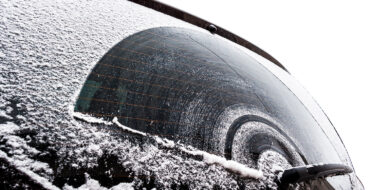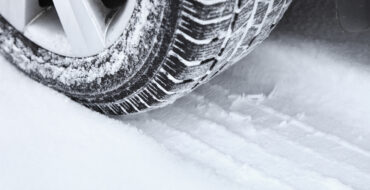In the winter, both you and your car have to endure the cold. Many people warm their cars up before driving at this time of year, but is this step really necessary? Let’s go over the reasoning behind warming up your car in winter, how long you should do it for, and the downsides of too much idling.
Is It Necessary to Warm Up Your Car?

Why Does My Car Need to Warm Up?
The concept of warming up a car started with carbureted engines. In cold temperatures, carbureted engines use a mechanical system known as a choke to temporarily restrict the amount of air taken in to mix with gasoline to vaporize fuel. These engines need to be warmed up before you drive, especially in the winter, otherwise they’ll stall.
In the late 1980s, most automakers switched to fuel-injected engines, which power most vehicles on the road today. These engines have sensors to adjust fuel consumption based on the temperature, which is a significant upgrade from the choke system.
With a fuel-injected engine, warming up in the cold is often still necessary, but only for lubrication. With most modern vehicles, it should take no more than 20 to 30 seconds for oil to circulate throughout the engine, coating all of its moving parts.
When to Warm Up Your Car
Warming up a car is common practice during the winter months because it affects your visibility and the warmth of the cabin.
If you have to clear your car of frost, ice, or snow, turning it on while parked can help melt away the buildup. Winter weather can hinder your visibility and safety, so don’t rush onto the road before your view is clear. In Ontario, if you drive with snow or ice covering your vehicle, you can be fined up to $500. Other provinces may have similar laws.
No one likes to drive while their teeth are chattering. If you need to let your engine warm up briefly to get some warm air flowing through your cabin, that’s understandable. But if you’re able to brave the cold, your car will continue warming up as you drive.

This doesn’t mean your car is immune to the cold, however. If it’s taking longer than usual to warm up your car, run through this diagnostic checklist to find the cause.
Warmth and visibility aside, it’s generally beneficial to let your engine warm up briefly before driving in cold weather. But unless there’s an outstanding issue with your vehicle, this shouldn’t take more than a minute. Keep in mind that if the temperature is above 0°C, there’s no need to warm your car up at all before driving.
Many people worry that turning their engine off and on will damage it. This is a common misconception; idling for too long is actually much more harmful to your vehicle.
The Downsides of Idling
Not only is warming up for too long unnecessary for modern cars, but it can have a negative impact on your vehicle, the environment, and even your health. It’s okay to idle when stuck in traffic, but you should avoid it in any other situation.
- If you idle while keeping other electronic components on, you can slowly drain your car battery.
- Idling for too long can worsen your car’s fuel economy. This means more visits to the gas station, which puts a strain on both your wallet and the environment.
- Idling for more than 10seconds produces more carbon dioxide than restarting your engine.
- Idling contributes to greenhouse gas emissions. If all Canadian drivers reduced their idling time by three minutes a day for a year, it would be like removing 320,000 cars from the road.
- In Toronto, you can be fined up to $500 for idling for over 60seconds.

Unless you have a very old vehicle, you shouldn’t need to warm your car up for more than 60 seconds, even in the winter. Although it can take up to 20 minutes for the engine to warm up completely in sub-zero temperatures, this time can (and should) be spent driving.
Winter Car Tips
Winter can take a real toll on your vehicle, so it’s important to take care of it. Keeping up a winter maintenance routine will help you keep your vehicle in good condition to get you through the season.
To keep yourself and everyone else on the road safe, follow these winter driving tips to handle the ice and snow with confidence.



